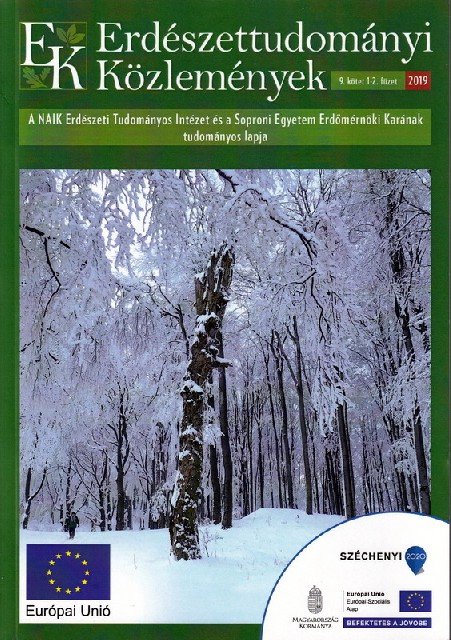Modeling pollen capacity of forest areas based on tree species and pollen data
Péter Ferenc Rozovits, Zsolt Magyar, Péter Kottek & Sándor Bordács
Correspondence
Correspondence: Rozovits Ferenc Péter
Postal address: H-1023 Budapest, Frankel Leó út 42-44.
e-mail: rozovitsferenc[at]gmail.com
Abstract
Model maps were constructed for estimating pollen capacity of Hungarian forests, based on meteorological pollen monitoring and forestry database information. Model maps are continuously updated and directly linked to the National Forest Database (NÉBIH Forestry Directorate) which are publicly available at NÉBIH website. Based on the model maps the flowering period of tree species can be forecasted in different region of Hungary. Data and information of the model maps can be used for annual seed crop prognoses and indirectly for planning of forest regenerations and silvicultural works. Model maps also provide an opportunity for more conscious planning of bee keeping and preparation of public health measures taken for pollen sensitivity.
Keywords: stock types, national forestry database, pollen concentration, pollen data, pollen sensitivity, crop estimation, bee-keeping
Open Acces
For non-commercial purposes, let others distribute and copy the article, and include in a collective work, as long as they cite the author(s) and the journal, and provided they do not alter or modify the article.
Cite this article as:
Rozovits, F. P., Magyar, Zs., Kottek, P. & Bordács, S. (2019): Modeling pollen capacity of forest areas based on tree species and pollen data. Bulletin of Forestry Science, 9(1): 19-33. (in Hungarian) DOI: 10.17164/EK.2019.002
Volume 9, Issue 1
Pages: 19-33
First published:
25 June 2019
Related content
2
More articles
by this authors
6
Related content in the Bulletin of Forestry Science*
More articles by this authors in the Bulletin of Forestry Science
* Automatically generated recommendations based on the occurrence of keywords given by authors in the titles and abstracts of other articles. For more detailed search please use the manual search.
